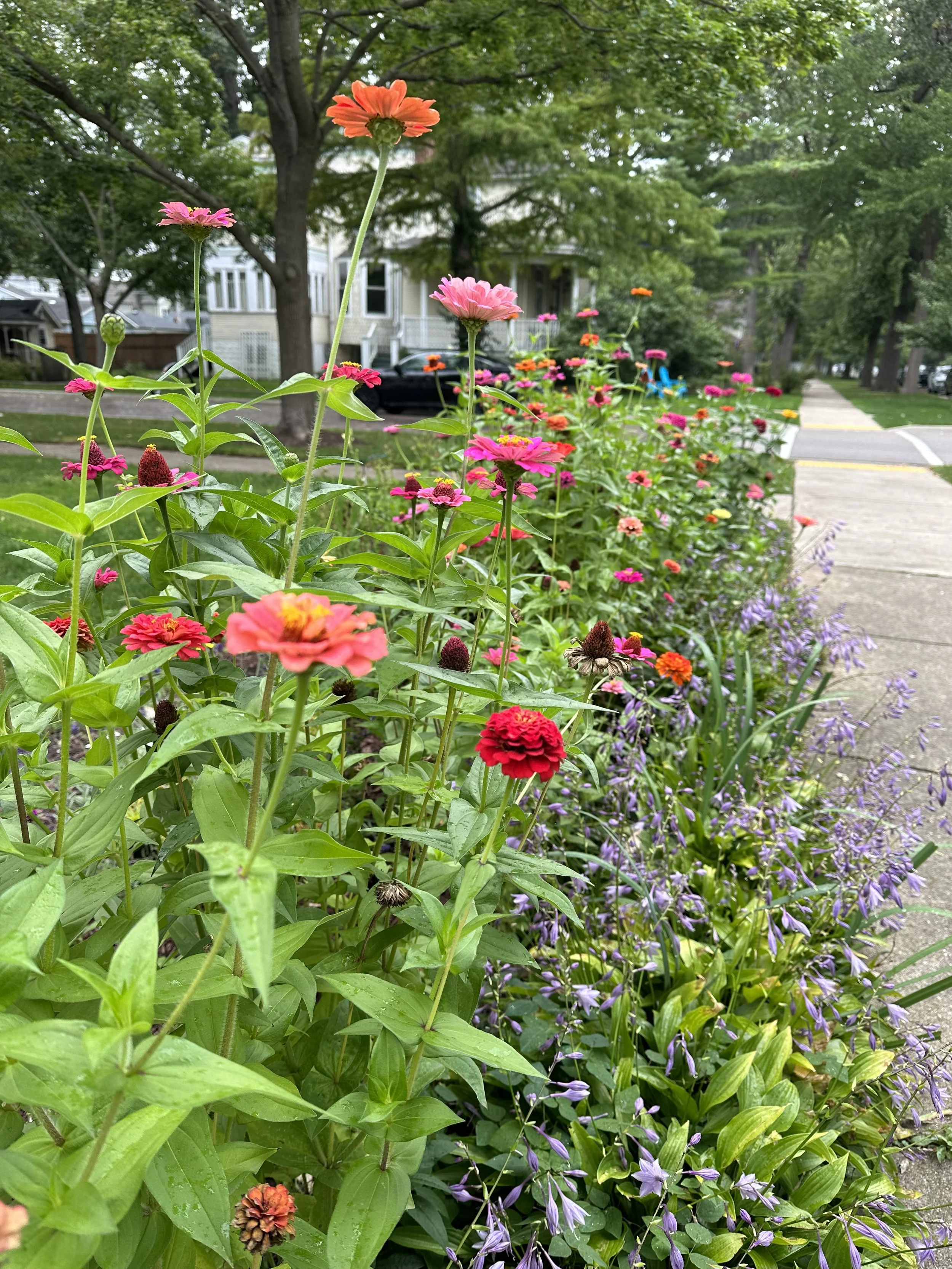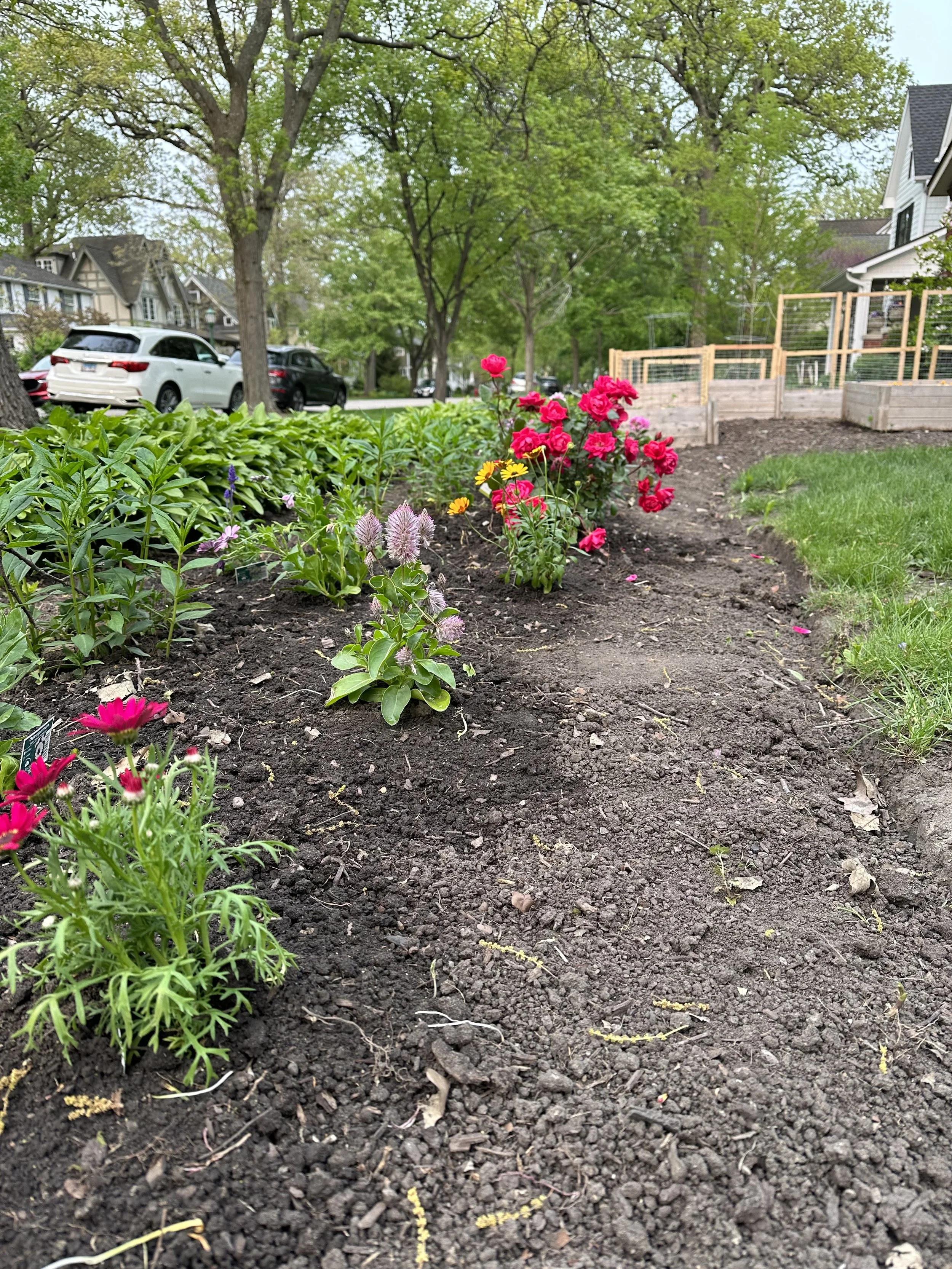Topsoil vs. Garden Soil: Understanding the Differences for Your Garden
Topsoil vs. Garden Soil: Understanding the Differences for Your Garden
Many gardeners that are just starting out think that topsoil and garden soil are the same thing, but surprisingly they're not!
These two types of soil have important differences and can make or break your summer gardening. So which is the best soil for your garden?
When it comes to gardening, choosing the right soil is crucial for the health and growth of your plants. Understanding the differences between topsoil and garden soil can help you make the best choice for your garden needs.
This post will explore the main differences, uses, and benefits of topsoil vs garden soil, providing you with the information you need to create a thriving garden.
Topsoil vs. Garden Soil
What is Topsoil?
Topsoil is the uppermost layer of soil, typically ranging from 2 to 8 inches deep. It consists of a mixture of sand, silt, clay, and organic material.
The composition of topsoil can vary greatly depending on your local soil, but it generally contains the highest concentration of organic matter and nutrients compared to the lower layers of soil.
General Purpose of Topsoil
Topsoil is often used for:
Filling Low Spots: Perfect for leveling uneven areas in your yard.
Creating New Garden Beds: A good start for building a new garden bed.
Improving Existing Soil: Enhances the soil quality of your garden by adding a nutrient-rich top layer of soil.
Will plants grow in topsoil?
Yes, plants can grow in topsoil, but the success depends on the quality of the topsoil. For better results, it's recommended to mix topsoil with organic matter, such as grass clippings or free compost, to enhance its nutrient content and improve soil conditions.
This mixture can help support plant roots and promote healthier plant growth.
Can topsoil be used for vegetable gardening?
Topsoil can be used for vegetable gardening, but it's essential to amend it with organic matter to improve its nutrient content and structure. Adding compost, peat moss, or a triple mix to the topsoil will create a more suitable environment for vegetable gardens, ensuring the plants receive the necessary nutrients and have better moisture retention and drainage.
How deep should topsoil be for a garden?
For a garden, topsoil should generally be about 6 to 12 inches deep. This depth provides a good base for plant roots to establish and ensures there is enough soil to retain moisture and nutrients.
For new lawn areas, a similar depth is recommended to support grass seeds and ensure a healthy, robust lawn.
Can I use topsoil for my raised beds?
While you can use topsoil, it’s better to mix it with organic compost and other soil amendments to create a nutrient-rich environment for your raised beds.
What is Garden Soil?
Garden soil is a mixture specifically formulated for gardening. It typically contains a blend of topsoil, organic compost, peat moss, and other soil amendments. Garden soil is designed to provide the necessary nutrients for plant growth, with good drainage and moisture retention properties.
Uses of Garden Soil
Gardening soils are ideal for:
Raised Beds: Provides the right soil for planting a raised bed in your garden.
Container Gardening: Perfect for potted plants and container gardening due to its balanced nutrients and good drainage.
Flower Beds and Vegetable Gardens: Offers a nutrient-rich environment for growing various plant life and flower gardens.
How do I know if my garden soil is of high quality?
Higher quality garden soil will have a balanced mix of organic matter, good drainage, and no signs of pests or weed seeds. It’s always a good idea to purchase from a reputable garden center like Home Depot or a local nursery.
Can I use garden soil for container gardening?
Yes, you can use garden soil for container gardening, but for the best results, it's recommended to look for a specific type of garden soil called potting soil. Traditional potting soil is formulated with the right balance of nutrients and has properties that promote good drainage and aeration, making it ideal for container plants. This ensures that your potted plants receive the necessary nutrients and have the optimal conditions for healthy growth.
Key Differences Between Topsoil and Garden Soil
Composition
Topsoil: Primarily consists of natural soil with a mixture of sand, silt, clay, and can include organic material.
Garden Soil: A customized mixture of organic matter, topsoil, peat moss, and other soil amendments to enhance plant growth.
Nutrient Content
Topsoil: Nutrient content can vary, often needing additional organic material for optimal plant health.
Garden Soil: Rich in organic matter and nutrients, providing a healthy environment for plant roots to thrive.
Uses and Applications In Your Own Garden
Topsoil: Best for general landscaping, filling low spots, and improving existing soil quality.
Garden Soil: Ideal for specific gardening needs, such as raised beds, container gardening, and growing a variety of plants.
Pros and Cons of Topsoil and Garden Soil
There are some key differences between topsoil and garden soil.
Topsoil
Pros:
Improves soil conditions
Good for leveling and filling low spots
Cost-effective
Cons:
May lack essential nutrients
Can be heavy and have poor drainage
Garden Soil
Pros:
Nutrient-rich environment
Better drainage and water retention than topsoil
Better quality soil mix to help specific plants grow
Cons:
More expensive
Potential for weed seeds or pests
Choosing the Right Soil for Your Garden
When deciding between topsoil and garden soil, consider the specific needs of your garden. For general landscaping and soil improvement, topsoil is a good choice. However, for raised beds, container gardening, and growing a variety of plants, garden soil is the best option due to its balanced nutrients and good drainage.
Practical Tips for Using Topsoil and Garden Soil
Topsoil: When using topsoil, it’s a good idea to mix it with organic material such as compost or peat moss to improve its nutrient content and drainage properties.
Garden Soil: For the best results, choose high-quality garden soil from a reputable bulk soil provider or garden center. Look for garden soils that contain organic compost, worm castings, and coconut husks for added nutrients.
Soil Testing and Amendments
Conducting a soil test can help determine the pH level and nutrient content of your soil, allowing you to make necessary adjustments. Adding soil amendments such as organic compost, mushroom compost, or sphagnum moss can improve soil quality and provide essential nutrients for healthy plant growth.
Final Thoughts
Understanding the main differences between topsoil and garden soil can help you choose the right type of soil for your gardening needs. Whether you're filling low spots, creating new garden beds, or nurturing container plants, selecting the appropriate soil type will ensure healthy plant growth and a thriving garden.
By following the expert advice and practical tips provided in this post, you’ll be well on your way to achieving a beautiful and productive garden.
Frequently Asked Questions
What are the main differences between topsoil and garden soil?
The main differences lie in their composition, nutrient content, and specific uses. Topsoil is natural and used for general landscaping, while garden soil is a formulated mix designed for gardening.
Should I add amendments to my existing soil?
Yes, adding soil amendments such as organic compost or peat moss to your current soil can improve soil quality, enhance drainage, and provide essential nutrients for plant growth.
Is garden soil better than topsoil?
Garden soil is generally considered better for gardening compared to regular topsoil. While topsoil is great for general landscaping, garden soil is specifically formulated with organic matter and soil amendments, such as compost, to provide a nutrient-rich environment ideal for garden plants.
If you're looking to start a new garden space, garden soil is usually the better place to begin because it supports healthy plant growth and beneficial soil microbes.
Can I mix garden soil with topsoil?
Absolutely! Mixing garden soil with regular topsoil can be beneficial, especially if you have large areas to cover. This combination can balance the nutrient-rich properties of garden soil with the structural benefits of topsoil.
For instance, using this mix in a new garden space can provide a good soil base while enhancing nutrient content, making it a great choice for novice gardeners looking to improve their garden plants' health.
What is the best soil to buy for a vegetable garden?
For a vegetable garden, the best soil to buy is one that is rich in organic matter and provides good drainage and moisture retention. Garden soil, particularly those labeled as organic compost or vegetable garden soil, is a good choice.
These soils are often available at garden centers and are designed to support the specific needs of vegetable plants, ensuring a nutrient-rich environment for healthy plant growth.
How do you turn topsoil into garden soil?
To turn topsoil into garden soil, you need to amend it with organic matter and soil amendments. Here’s a simple method:
Add Organic Matter: Mix in compost, peat moss, or coconut husks to improve the soil’s nutrient content.
Check pH Level: Conduct a soil test to ensure the pH level is suitable for your plants and adjust if necessary.
Improve Drainage: Incorporate materials like sandy soil or perlite for better drainage.
Enhance with Nutrients: Add fertilizer or worm castings to provide essential nutrients. This process creates a nutrient-rich soil mix that supports healthy plant growth.
By understanding the key differences between soil types and using them appropriately, you can create a healthy and vibrant garden that thrives all season long.
You might also like…
Hi, I’m Jen!
Hi, I’m Jen, your perpetually optimistic, fun-loving, witty friend. When I’m not working at The Marketing Greenhouse, you can find me gardening in the sun, playing games with my kids or creating content that inspires people to try new things and be the best version of themselves.




















